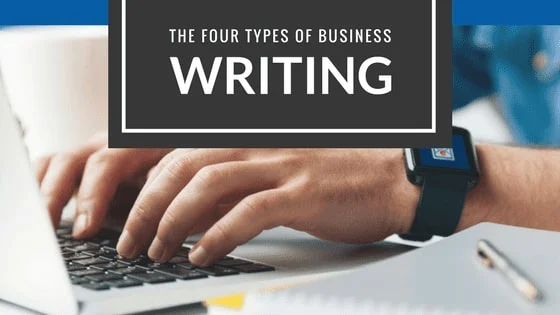How to Self Publish a Book in 7 Steps: A Guide for Nonfiction Writers

This is a guide for authors who want to write and self-publish a nonfiction book to further their career or increase their business profile.
Self-publishing a book today is more accessible and cost-effective than it’s ever been but it can be quite an involved process. In this article I’m going to show you all the steps required to go from book idea to books in hand in the most direct way.
If you’re a first-time author, you may have several questions about book publishing, such as:
- Where do I self-publish my book?
- What’s the best approach to self-publishing?
- How do I publish my book on Amazon?
- What are the steps required to self-publish a book?
Below, I’ll answer these questions in detail and I’ll also share the strategies and tactics that will ensure that your nonfiction book is the best it can be.
The Critical Path: 7 Self-Publishing Steps
Let’s begin with the most important step in the entire journey. If you nail this step, you’ll be off to a great start. If you don’t get this right, your nonfiction book will struggle:
Step 1: Know Your Audience

The most successful nonfiction books are created for a specific target audience. Those authors took the time to learn their readers’ hopes, dreams, fears, and most importantly: the main problem that afflicts them (which their book naturally helps them solve).
When it comes to helping individuals, the problem could be related to issues with their physical or psychological health, finances, careers, etc. When it comes to helping businesses, the problem could be related to revenue, profits, management, efficiency, culture, and so on.
Basically, your audience has been experiencing a high level of pain for quite some time and the job of your nonfiction book is to make that pain go away.
Identify the Pain You’re Trying to Solve
People experience problems with different degrees of pain. Some problems cause a relatively low level of pain – let’s call this a level 1 or 2 pain (say, someone wants to lose a 10-15 lbs. over the next six months in preparation for their summer vacation in Hawaii).
At the other end of the spectrum, you’ll find problems with a pain level of 9 or 10 (say, someone needs to lose 10-15 lbs. over the next six months because their doctor told them that otherwise they risk aggravating their health condition).
The difference between an average nonfiction book and a compelling one is the urgency of the problem it helps their target audience solve.
This difference isn’t dependent on the specific solution the book presents (in the above example: a fool-proof technique to lose 10-15 lbs. over six months) but on the level of pain the solution relieves.
Create an Avatar of Your Target Audience
Your job now is to identify the perfect audience for your solution. Begin by researching what type of level 9 or 10-pain problem your solution can help people solve, and then find out as much as possible about them.
Who’s in your target audience? Some of them may be current clients. Some may be other people you know in your circle. Some may be people you find in online forums and groups.
A quick way to get started is to interview your clients (tell them you’re doing research for a book). You can join forums and Facebook groups or do Google searches on the problem you’re trying to solve and then read the comments people leave on relevant blogs.
Use the above techniques to find out as much demographic and psychographic information as possible about your target audience.
Learn about their hopes and dreams, their fears and worries, and what keeps them up at night. Then use this information to create the profile of a perfect audience member.
We’ll refer to this profile as your audience’s “avatar.” Now, create a document listing all the information you uncovered.
To create your avatar, do the following:
- First, make up a first name (this makes the avatar more “real” to you)
- Find a headshot with the right age and gender from a free stock photo site and paste it into your document
- Add the avatar’s age and marital status
- Add their profession and annual family income
- Add their children if any, their occupation and living arrangements (single, married, working, studying, living at home, living away)
- Is your avatar a homeowner? In that case, what’s the value of their home?
- Any pets? Hobbies?
- Any health or other issues they suffer from?
- Finally, list their hopes, dreams, fears, challenges and what keeps them up at night.
Why do you need so much detail? Because when you write your nonfiction book, you’ll be addressing it to this individual exclusively. In short, you’ll be writing your book for an audience of one: your avatar.
Step 2: Define Your Book’s Main Idea or Thesis

Now that you know exactly who you’re going to be writing your book for and what their level 9 or 10 problem is, it’s time to define your book’s central idea.
What’s this idea? Simple: it’s your unique solution addressed to your avatar.
Continuing with our prior example, your main idea might be: “Effective Weight Loss for Diabetes Sufferers.” Now, a big mistake many first-time authors make is to skip this research and instead target their solution to too broad an audience – for example: “Effective Weight Loss.”
The reason they’ll likely not find success is that they’re jumping headfirst into a massively competitive multi-billion dollar playing field where they’ll instantly become a tiny fish in a huge pond. As they say in the sales & marketing world: “Market to everyone and sell to no one.”
So, make sure that your main idea addresses a very specific sub-group of people who experience a common high level of pain and you’ll be able to find your vein of gold.
Step 3: Begin Writing Your Manuscript

Now it’s time to begin writing your manuscript. If you find this task overwhelming fear not, because as an expert in your field all the ideas for your book are already stored in your brain.
All the information you need will be drawn from your many years of experience in the industry, your years of solving problems for clients and your years spent fine-tuning your skills and knowledge. Your goal now is to simply “download” this information from your brain onto the written page.
Create Your Book’s Mind Map
How are you going to do this? By using a technique called “mind mapping” popularized in the 70’s by British Author Tony Buzan.
Begin by writing your book’s main idea in the center of a large piece of paper (or a whiteboard, if you have one).
Then, draw branches coming out radially from the center that list all the key topics that are required in order to support your book’s main idea. Next, draw sub-branches coming out of each topic to break them down into subtopics.
Repeat this branching process until you feel you’ve reached the depth of knowledge that’s right for your book. This diagram will be your book’s “mind map.”
Here’s an example from one of Tony Buzan’s popular titles:
The reason mind mapping works so well is that it mimics the way our brains store and retrieve information. Now you’re ready to use this information to begin adding structure to your book.
Create a Book Outline
Your next step is to turn your mind map into a book outline. In essence, your main idea will become the basis for the title of your book, the topics that support this idea will become the basis for your chapters and the sub-topics will become the basis for your sub-chapters.
Write down your book outline as a numbered list using your favorite word processor (remember to hit the tab key to level down for each sub-topic).
Here’s an example:
- Part 1: How Your Mind Works
- How your mind works
- Your conscious and subconscious mind
- Where your thoughts originate
- etc…
- Your belief system
- Beliefs from your upbringing
- Beliefs and your emotions
- etc…
- The power of perception
- ………..
- ………..
- How your mind works
- Part 2: How Your Mind Impacts Your Career
- The role your mind plays in procrastination
- ………..
- ………..
- The role your mind plays in setting goals
- ………..
- ………..
- The role your mind plays in procrastination
- Part 3: How Your Mind Impacts Your Relationships
- ………..
- ………..
You’ll now use this outline to write your manuscript. To begin, pick the topic or subtopic that inspires you the most and start writing. Nonfiction books don’t need to be written in sequence – your ordered list will take care of the flow.
You’ll notice that by following this technique you’ll never be at a loss for words. All the outline is doing is jogging your memory to open the floodgates of thoughts and ideas so that they can come down from your brain to the keyboard.
Step 4: Create an Advance Reader Group

Now it’s time to assemble your advance reader group. You’ll need to enlist members of your target audience who you know and trust so you can pass on each chapter to them as you complete it for feedback.
These people could be your own clients, clients of colleagues, or people you know that could benefit from your book. It’s critical that your advance-reading group is not made up of family, friends and colleagues, unless they happen to be members of your target audience.
The reason you want to develop this early feedback loop is to ensure that what you write resonates with your audience. If your book is written to address areas that don’t fully resonate with your audience – even if your content is perfect for them – your writing will fall on deaf ears.
By receiving this feedback while you shape your book you can ensure that when your writing is done it’ll match the needs of your target audience.
Imagine if you wrote your entire manuscript and only then circulated it to test readers. If it didn’t resonate with them, you’d be forced to restart from scratch, wasting a lot of time and energy.
Step 5: Hire a Professional Editor

Once your manuscript is completed to the best of your ability (this will require at least a couple of top-to-bottom rewrites in order to clean it up), it’s time to enlist the help of a professional nonfiction editor.
As I’ve mentioned in several other articles, every single successful author has an editor and so should you. After all, you’ll be competing with traditionally published books that are professionally edited.
Also, your book will be a proxy for your professionalism and your reputation, and this is an area where you can’t afford to cut corners.
When it comes to the editing process you’ll have to go through four distinct passes, as shown below.
Developmental Editing
Developmental editing will take care of the structural aspects of your manuscript, such as:
- The logical flow of ideas
- The relevance of those ideas
- Your presentation
- Overall strengths and weaknesses
Content Editing
Content editing will switch the focus from structure to mechanics, by:
- Checking your manuscript for readability and style and making suggestions to improve clarity
- Making sure that your chapters are structured correctly and that each paragraph carries a single idea
- Suggesting the right placement for any illustrations, images, tables, or any other type of graphical element in relation to the text
Copyediting
The next pass, copyediting, will take care of:
- Incorrect spelling
- Grammar and punctuation
- Awkward use of words and phrases
- Removal of nonessential words and so on
Proofreading
The final pass, proofreading, will take care of overall quality, checking your manuscript so that it’s ready to publish. It includes:
- Scanning your manuscript line by line looking for typos and other errors
- Correcting formatting inconsistencies
- Taking care of incorrect references
- General fact checking
Step 6: Hire Professional Book Designers

Once your manuscript is print-ready you’ll need to hire the next set of professionals – your book layout and cover designers.
They’ll take care of designing the inside of your book as well as creating a compelling book cover that matches the quality of the covers you’ll be competing with.
Book Layout
Your book layout designer will take care of:
- Choosing your book’s fonts
- Laying out the text and any required graphic elements
- Designing the headings, subheadings and chapter pages
- Creating headers and footers
- Adding the required front matter (e.g. copyright page, table of contents, etc.)
- Adding the required back matter (e.g. afterword, index, etc.)
Above all, they’ll make sure that your book abides by nonfiction industry standards. For that reason, this is a function you don’t want to outsource to non-professionals, such as family or friends.
Nonfiction layouts are very specific and require a deep understanding of the rules of the book trade. Anything that falls short of accepted norms will look amateurish in the eyes of industry gatekeepers – even if it looks okay to you.
These gatekeepers could be radio-show producers that are considering you for an expert interview, decision makers that can open doors for you in your industry, or event managers that book speakers for conferences.
They’ve been pitched thousands of books in their careers and will know an amateur design the minute they see it.
Book Cover
The same goes for your book cover – it must be professionally designed and not left to amateurs.
The nonfiction genre requires a very specific type of book cover and only professionals understand the rules of the trade. Now, there are many book-making software tools that create pretty-looking covers. But pretty doesn’t mean professional.
You don’t want decision makers and gatekeepers to disqualify your book before they even open it – don’t try creating the cover yourself or giving it to a friend or relative who’s good at Photoshop.
You need to create a product that competes side-by-side with traditionally published nonfiction books and that requires hiring a professional cover designer.
Step 7: Time to Publish Your Book!

Now, you’re finally ready to self-publish! Your book layout and book cover designers will produce the necessary print-ready files for your book to be published.
These files will need to be uploaded into self-publishing platforms that will make your book widely available for distribution.
The two best platforms for self-publishing nonfiction are:
Kindle Direct Publishing (KDP)
KDP is the self-publishing arm of Amazon, the largest online bookstore in the world. This service will make your printed book available for direct ordering through Amazon websites in the U.S., Canada, Europe, and Japan.
KDP has on-demand printing facilities in those regions, which allows it to receive an order of your book, print the number of copies required to fulfill the order and ship it to the book buyer at affordable domestic rates.
This advanced printing technology allows them to deliver books as if they had them in stock, but without inventory cost and without taking up space in the warehouse.
IngramSpark
For worldwide distribution to brick and mortar bookstores you’ll need to use a different platform: IngramSpark, which is a division of Ingram, the largest book distributor in the world to physical bookstores and libraries.
IngramSpark works in a similar fashion to KDP: your designers will upload print-ready files into their platform and these files will be distributed to the various on-demand printing facilities that they operate around the world.
Now that you have all your distribution bases covered you can consider yourself self-published!
In Closing
If you follow the above seven steps to go from book idea to books in hand, you’ll be able to self-publish a nonfiction book that’ll resonate with your audience, that’ll meet the quality standards of other books you’ll be competing with, and that’ll be widely available for ordering throughout the world.
Your job now is to begin promoting your book and give it all you’ve got to reach out to your target audience so that you can be of service to as many people in your niche as possible.
All the best on your self-publishing journey!
If you enjoyed this article and are in the process of self-publishing a nonfiction book, be sure to check out my free nonfiction success guide, drawn from years of experience editing books for bestselling authors (including a New York Times bestseller) and ghostwriting for CEOs and politicians. Simply click here to get instant access.
Ben
Leave me a comment below if you have any questions or a specific need that I can help you address – I operate an author services firm that specializes in helping entrepreneurs, professionals and business owners who want to publish books as a calling card for prospects, to establish their status as an expert or to just to generate additional leads for their businesses.
Here are some related articles I highly recommend:
How to Write a Compelling Book in 12 Steps: A Must-Read Guide for Nonfiction Authors
The 10 Must-Have Writing Skills for Nonfiction Authors
How to Find the Perfect Writing Coach for Your Nonfiction Book
How to Come Up With Killer Book Titles for Your Nonfiction Book
How Much Does it Cost to Self-Publish a Nonfiction Book?
 Bennett R. Coles is an award-winning author of six books published through Harper Collins (New York) and Titan Publishing Group (London). He is also the publisher at Promontory Press, editor for multiple bestselling authors (including a NY Times bestseller), ghostwriter for CEOs and politicians and the founder of Cascadia Author Services, a boutique full-service firm that specializes in premium author services specifically designed for busy professionals. Our end-to-end services include writer coaching, ghostwriting, editing, proofing, cover design, book layout, eBook production, marketing, printing and distribution.
Bennett R. Coles is an award-winning author of six books published through Harper Collins (New York) and Titan Publishing Group (London). He is also the publisher at Promontory Press, editor for multiple bestselling authors (including a NY Times bestseller), ghostwriter for CEOs and politicians and the founder of Cascadia Author Services, a boutique full-service firm that specializes in premium author services specifically designed for busy professionals. Our end-to-end services include writer coaching, ghostwriting, editing, proofing, cover design, book layout, eBook production, marketing, printing and distribution.








Leave a Reply